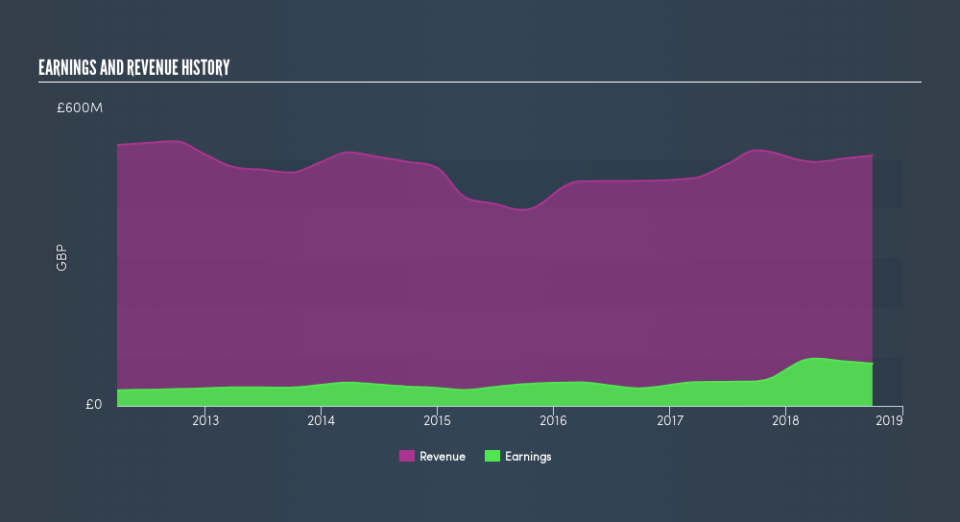Does The De La Rue plc (LON:DLAR) Share Price Tend To Follow The Market?

Anyone researching De La Rue plc (LON:DLAR) might want to consider the historical volatility of the share price. Modern finance theory considers volatility to be a measure of risk, and there are two main types of price volatility. First, we have company specific volatility, which is the price gyrations of an individual stock. Holding at least 8 stocks can reduce this kind of risk across a portfolio. The other type, which cannot be diversified away, is the volatility of the entire market. Every stock in the market is exposed to this volatility, which is linked to the fact that stocks prices are correlated in an efficient market.
Some stocks are more sensitive to general market forces than others. Beta is a widely used metric to measure a stock’s exposure to market risk (volatility). Before we go on, it’s worth noting that Warren Buffett pointed out in his 2014 letter to shareholders that ‘volatility is far from synonymous with risk.’ Having said that, beta can still be rather useful. The first thing to understand about beta is that the beta of the overall market is one. A stock with a beta below one is either less volatile than the market, or more volatile but not corellated with the overall market. In comparison a stock with a beta of over one tends to be move in a similar direction to the market in the long term, but with greater changes in price.
View our latest analysis for De La Rue
What we can learn from DLAR’s beta value
Given that it has a beta of 0.84, we can surmise that the De La Rue share price has not been strongly impacted by broader market volatility (over the last 5 years). This suggests that including it in your portfolio will reduce volatility arising from broader market movements, assuming your portfolio’s weighted average beta is higher than 0.84. Beta is worth considering, but it’s also important to consider whether De La Rue is growing earnings and revenue. You can take a look for yourself, below.
How does DLAR’s size impact its beta?
De La Rue is a small company, but not tiny and little known. It has a market capitalisation of UK£438m, which means it would be on the radar of intstitutional investors. Small cap stocks ofthen have a higher beta than the overall market. However, small companies can also be strongly impacted by company specific developments, which can move the share price in ways that are unrelated to the broader market. That could explain why this one has a low beta value.
What this means for you:
The De La Rue doesn’t usually show much sensitivity to the broader market. This could be for a variety of reasons. Typically, smaller companies have a low beta if their share price tends to move a lot due to company specific developments. Alternatively, an strong dividend payer might move less than the market because investors are valuing it for its income stream. This article aims to educate investors about beta values, but it’s well worth looking at important company-specific fundamentals such as De La Rue’s financial health and performance track record. I highly recommend you dive deeper by considering the following:
Future Outlook: What are well-informed industry analysts predicting for DLAR’s future growth? Take a look at our free research report of analyst consensus for DLAR’s outlook.
Past Track Record: Has DLAR been consistently performing well irrespective of the ups and downs in the market? Go into more detail in the past performance analysis and take a look at the free visual representations of DLAR’s historicals for more clarity.
Other Interesting Stocks: It’s worth checking to see how DLAR measures up against other companies on valuation. You could start with this free list of prospective options.
We aim to bring you long-term focused research analysis driven by fundamental data. Note that our analysis may not factor in the latest price-sensitive company announcements or qualitative material.
If you spot an error that warrants correction, please contact the editor at editorial-team@simplywallst.com. This article by Simply Wall St is general in nature. It does not constitute a recommendation to buy or sell any stock, and does not take account of your objectives, or your financial situation. Simply Wall St has no position in the stocks mentioned. Thank you for reading.

 Yahoo Finance
Yahoo Finance 
